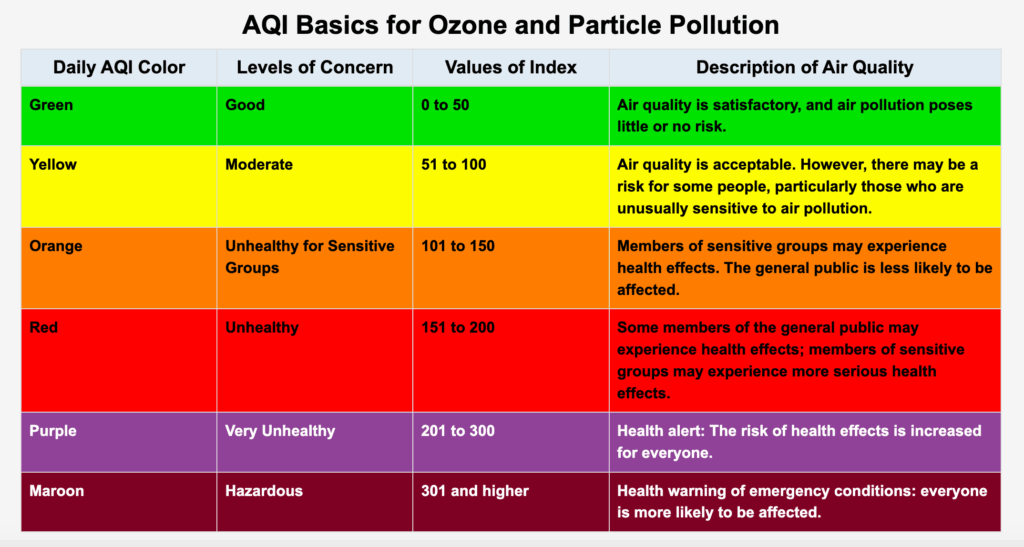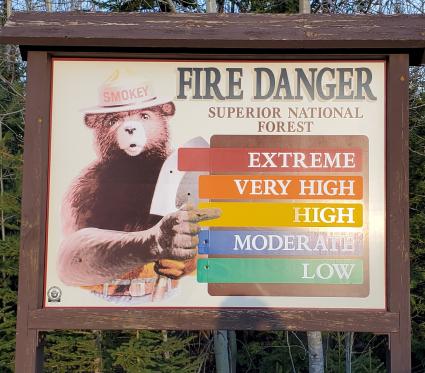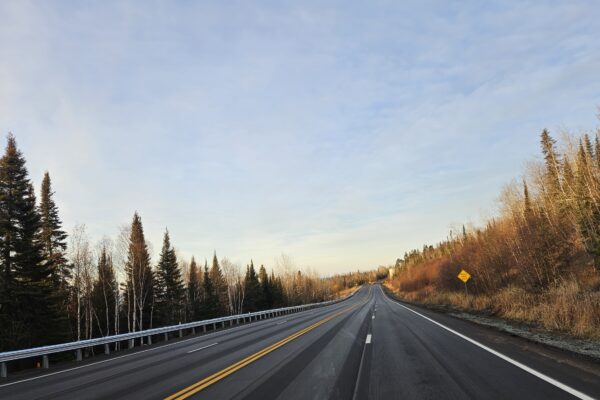What to know about managing air quality health impacts during wildfire season
Residents of northeast Minnesota are no strangers to air quality warnings during the summer. Smoke from wildfires in both Canada and Minnesota have led to the Minnesota Pollution Control Agency (MPCA) issuing warning that have lasted for multiple days thought the past several summers.
Cook County Public Health and Human Services Public Health Educator Andrea Tofte told WTIP that while wildfires are not new, the increase in large scale fires, coupled with more awareness of respiratory health following the COVID-19 pandemic has meant more attention paid to air quality.
“Being exposed to poor air quality days is a health hazard, and we see it as a way to prepare for emergencies,” said Tofte. “And so educating our community about what to do when we have wildfire smoke, how to protect themselves, and how can they avoid that exposure, that’s kind of been at a forefront.”
While Tofte said that PHHS does not issue warnings around air quality the way that MCPA does, the county website does include resources to help people prepare for periods of poor air quality.
Tofte said it is important for people to understand what the color-coded Air Quality Index (AQI) system means. The scale is based on the concentration of several pollutants, including particles in the air from wildfire smoke. It begins at Green, which is “good” air quality, and ranges to “hazardous,” shown as maroon on maps released by MPCA.

Graphic by AirNow.
The AQI rating notes who is most at risk of experiencing the impacts of poor air quality at different levels. For the less severe warning levels, those with underlying health conditions, those who must be outside much of the day, children, and elderly adults are most at risk. With warnings at the red, purple, or maroon levels, everyone is at risk.
The symptoms that can be caused by exposure to high concentrations of fine particles include shortness of breath, wheezing and coughing, headache, chest pain, and fatigue. It can also exacerbate conditions like heart disease, asthma, and COPD.
If someone is experiencing acute symptoms, they should seek medical help. Otherwise, Tofte said the best course of action for anyone experiencing milder symptoms is to limit their exposure. In their own homes, Tofte said she recommends that people establish a “clean room.” She said, “You can choose a room in your home, close the windows and doors to avoid the intrusion of the outside air in the home.”
An air purifier can be part of a clean room set-up, and Tofte said that for those who don’t have an air purifier, they can make one using a box fan and a filter for an HVAC system. The Environmental Protection Agency released a step-by-step instructional video on how to make a do-it-yourself air purifier.
Tofte also recommended using a KN95 or N95 on days with poor air quality if someone needs to be outside. If people are away from home and starting to experience symptoms, she suggested that they take a break in a building with air conditioning, like the library or a grocery store.
Tofte said that staying informed about conditions is key for managing risk that comes with diminished air quality. She said, “My biggest takeaway for the community is be smoke aware.”
To keep people notified about the current AQI, Tofte recommends the AirNow mobile app, which offers updates on conditions. She also pointed to the Cook County PHHS website for more resources for those concerned about air quality, and preventing negative health impacts.
WTIP’s Kirsten Wisniewski spoke with PHHS educator Andrea Tofte. Audio of that interview is below.














